Why does the indoor fan stop sometimes on my Panasonic CU-2E18LBE?
- JjonbarajasSep 12, 2025
The indoor fan on your Panasonic Air Conditioner stops occasionally during automatic fan speed setting to help remove surrounding odors.
Why does the indoor fan stop sometimes on my Panasonic CU-2E18LBE?
The indoor fan on your Panasonic Air Conditioner stops occasionally during automatic fan speed setting to help remove surrounding odors.
What to do if my Panasonic Air Conditioner unit does not work?
If your Panasonic Air Conditioner unit isn't working, check if the circuit breaker is tripped and check if timers have been set.
How to improve heating/cooling efficiency of my Panasonic CU-2E18LBE?
To improve the heating/cooling efficiency of your Panasonic Air Conditioner, you can try the following: Ensure the temperature is set correctly, close all doors and windows, clean or replace the filters, and clear any obstructions at the air inlet and outlet vents.
What to do if Patrol sensor or e-ion indicator on the indoor unit is blinking on my Panasonic Air Conditioner?
To resolve this, stop the Patrol or e-ion operation and then restart it. If the patrol sensor or e-ion indicator continues to blink, please consult an authorized dealer.
Why does the indoor fan stop occasionally during heating operation of my Panasonic Air Conditioner?
The indoor fan stops occasionally during heating operation of your Panasonic Air Conditioner to avoid unintended cooling effect.
Why does my Panasonic CU-2E18LBE Air Conditioner make a cracking sound during operation?
The cracking sound during operation of your Panasonic Air Conditioner is due to changes in temperature causing the expansion and contraction of the unit.
What does outdoor heat exchanger temperature sensor 1 abnormality mean for Panasonic CU-2E18LBE?
If your Panasonic Air Conditioner indicates an outdoor heat exchanger temperature sensor 1 abnormality, it means that the outdoor heat exchanger temperature sensor 1 is open or short circuit.
What does outdoor air temperature sensor abnormality mean for Panasonic CU-2E18LBE Air Conditioner?
If your Panasonic Air Conditioner indicates an outdoor air temperature sensor abnormality, it means that the outdoor air temperature sensor is open or short circuit.
Why does my Panasonic Air Conditioner make a water flowing sound during operation?
The water flowing sound you hear during the operation of your Panasonic Air Conditioner is due to refrigerant flow inside the unit.
What to do if my Panasonic CU-2E18LBE Air Conditioner has compressor discharge pressure overshoot protection?
If your Panasonic Air Conditioner is experiencing compressor discharge pressure overshoot protection, check the refrigeration system.
Explains the concept of multi air conditioner systems and their space-saving benefits.
Describes how indoor units function individually or simultaneously within a multi-system.
Details temperature ranges for cooling and heating for specific single split outdoor unit models.
Details temperature ranges for cooling and heating for multi split outdoor unit models.
Explains warning signs, caution signs, and prohibited/compulsory action symbols.
Covers safe usage and operation of indoor and outdoor units, including environmental and electrical safety.
Details safety measures for remote control usage and power supply connections.
Addresses specific power supply warnings and cautions for indoor and outdoor units.
Provides a caution regarding the correct type of batteries for the remote control.
Explains how to turn the unit on/off and set the desired temperature.
Describes selecting operation modes, fan speeds, and adjusting airflow direction.
Explains the NANOE-G air purification and humidity improvement functions.
Covers powerful, quiet operation, and intelligent ECONAVI/AUTO COMFORT modes.
Provides step-by-step instructions for setting ON/OFF timers.
Clarifies notes on activating various features like NANOE-G and ECONAVI.
Provides guidance on cleaning the main unit and front panel.
Identifies key components like sensors, louvers, and the auto ON/OFF button.
Details the cleaning schedule and method for air filters and the nanoe-G generator.
Lists symptoms that do not indicate a malfunction and their causes.
Outlines checks to perform before calling for servicing for operational issues.
Explains how to retrieve error codes when the unit stops and the timer blinks.
Provides guidance for inspection after extended non-use and for seasonal storage.
Lists conditions under which the unit requires professional service.
Information on the collection and disposal of old electrical equipment and used batteries.
Steps for preparing the remote control by inserting batteries.
Guides on selecting mode, starting/stopping, and setting temperature.
Explains the concept of multi air conditioner systems and their space-saving benefits.
Describes how indoor units function individually or simultaneously within a multi-system.
Details temperature ranges for cooling and heating for specific single split outdoor unit models.
Details temperature ranges for cooling and heating for multi split outdoor unit models.
Explains warning signs, caution signs, and prohibited/compulsory action symbols.
Covers safe usage and operation of indoor and outdoor units, including environmental and electrical safety.
Details safety measures for remote control usage and power supply connections.
Addresses specific power supply warnings and cautions for indoor and outdoor units.
Provides a caution regarding the correct type of batteries for the remote control.
Explains how to turn the unit on/off and set the desired temperature.
Describes selecting operation modes, fan speeds, and adjusting airflow direction.
Explains the NANOE-G air purification and humidity improvement functions.
Covers powerful, quiet operation, and intelligent ECONAVI/AUTO COMFORT modes.
Provides step-by-step instructions for setting ON/OFF timers.
Clarifies notes on activating various features like NANOE-G and ECONAVI.
Provides guidance on cleaning the main unit and front panel.
Identifies key components like sensors, louvers, and the auto ON/OFF button.
Details the cleaning schedule and method for air filters and the nanoe-G generator.
Lists symptoms that do not indicate a malfunction and their causes.
Outlines checks to perform before calling for servicing for operational issues.
Explains how to retrieve error codes when the unit stops and the timer blinks.
Provides guidance for inspection after extended non-use and for seasonal storage.
Lists conditions under which the unit requires professional service.
Information on the collection and disposal of old electrical equipment and used batteries.
Steps for preparing the remote control by inserting batteries.
Guides on selecting mode, starting/stopping, and setting temperature.
| Brand | Panasonic |
|---|---|
| Model | CU-2E18LBE |
| Category | Air Conditioner |
| Language | English |
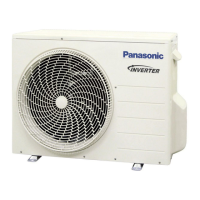



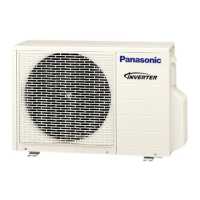
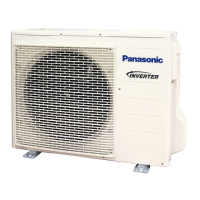


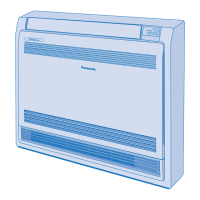
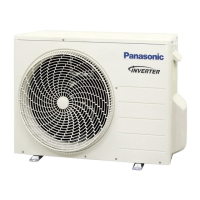


